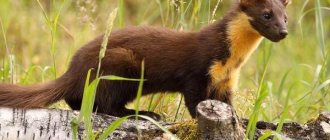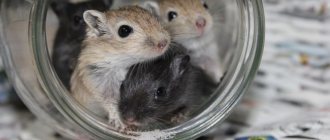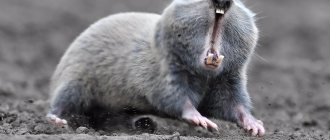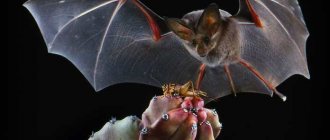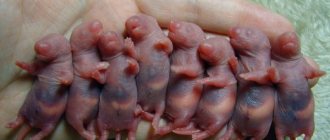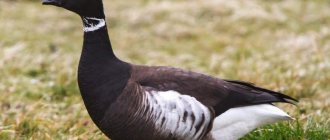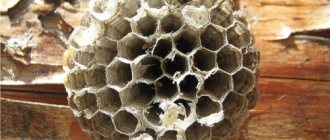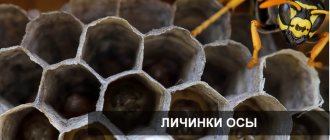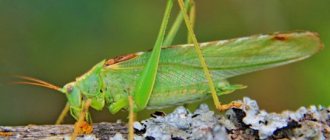Description and features
Deer belong to the order of artiodactyls, and are considered the smallest creatures from this order. These amazing deer are only from 20 to 40 cm in height, reach from 40 to 80 cm in length, and weigh from 1.5 kg. The thickest members of the family reach 12 kg.
They have a small head with erect ears, beautifully set on the neck, moist large eyes, a small deer tail, thin slender legs, and at the same time a fairly thick body with an arched back, an elongated sharp muzzle, soft shiny fur of various colors and a complete absence of horns .
But males have fangs that barely fit in the mouth. They usually protrude 3 cm from the gums. Their fur is camouflage in color - brown, brown, dark gray, with white spots on the belly and chest. In addition, the fawn color characteristic of deer is always present on the sides.
The deer mouse grows up to 25 cm at the withers
They step on two central toes with hooves, but they also have two lateral toes, which other ruminants no longer have. In this way they are similar to pigs. And they are related to deer by a similar structure of the dental apparatus and digestive system. Although their stomach is more primitive, it consists of three sections, and not 4, as in many artiodactyls.
The deer mouse in the photo is a fantastic cross between a roe deer and a large mouse. Her figure and muzzle are very unusual against the backdrop of long legs and sad deer eyes.
general characteristics
The length of the mouse body, depending on the species, varies from 5 to 19 cm, and if measured with the tail, it doubles. The parameters for all types of mice are similar:
- body elongated;
- the tail is thin, long, depending on the type, 70-120% of the length of the body;
- the head is small, the muzzle is blunt or elongated;
- ears are round, large or small;
- eyes are round, moderately convex, black or red;
- the nose is small, mobile, sensitive;
- the hind limbs are elongated, allowing the animal to jump well and rise, sitting on its hind legs;
- The forelimbs are miniature, shorter than the hind limbs.
In this video you will learn interesting facts about mice:
Kinds
We can safely say about deer that they have not been studied well enough. And all because of their extreme shyness, timidity and reluctance to be seen. Their Latin name Tragulus (tragulus) could come from the ancient Greek word τράγος (goat) with the addition ulus, which means “tiny”.
Perhaps they were called that not only because of their hooves, but also because of the horizontal position of their pupils, which helps them see better, including in the dark. There are three genera in the deer family: Asiatic deer, water deer and sika deer.
Asian deer (kanchili, or, as they used to say, kantshilas) include 6 types:
- Malay kancil. Distributed in Indochina, Burma, Brunei, Cambodia, China, Indonesia, Thailand, Laos and Vietnam. It is a nominative species (representing a typical specimen of the entire group).
- Small deer, or Javan small kanchil. Its habitat is in Southeast Asia, from the Chinese southern regions to the Malay Peninsula, as well as on the islands of Sumatra, Borneo and Java with the surrounding islets. The smallest of the artiodactyls living on Earth. Length no more than 45 cm, height up to 25 cm, weight from 1.5 to 2.5 kg. The tail is about 5 cm long. The fur is brown in color, the belly, throat and lower jaw are white.
- Big deer, or napu deer, or big mouse deer. The most famous of all deer. It weighs about 8 kg, sometimes reaching more weight. Its body length is 75-80 cm, height - 35-40 cm. It lives in Thailand, Indochina, the Malay Peninsula and the islands of Sumatra and Borneo.
- The Philippine deer mouse lives, as you know, in the Philippine Islands. Her fur is darker than other deer, almost black. In the sun it shimmers reddish-brown. Although during the day the animal is almost impossible to see. All observations were made at night using photographs.
There are no fundamental differences between the types of kanchilas
- Vietnamese canchil, or Vietnamese mouse-deer . The animal is the size of a rabbit, with a brownish-gray coloration with a silvery coating. Therefore, it is also called silver chevrotain. Lives in the dense forests of Truong Son. It is considered endemic to Vietnam (a species unique to this place). Listed as one of the 25 Most Wanted Lost Species.
It was he who was lucky enough to be rediscovered in November 2022 by Vietnamese natural scientists, and this happened after 29 years of absence of any signs of its existence. It was possible to photograph it only with the help of highly sensitive camera traps. The joy of scientists knew no bounds, because it was believed that this species was already extinct.
- Williamson's mouse deer is found in Thailand and partly in China. It differs little from its relatives, except perhaps in its slightly yellower color and size.
Water kanchile (African). The only species of its kind. The sizes can be called large, they are close to the parameters of a large canchila. The color is light brown. It lives in central Africa, near fresh water bodies. It spends so much time in water that it can rightfully be considered an amphibian. In the water it feeds and escapes from predators. At the same time, it swims well.
Spotted kanchile (spotted chevrotain or chevron) - lives in India and Ceylon. It is distinguished by the color most common for deer - red-brown fur with numerous light spots. This species is close to the African deer.
Previously considered monotypic, there are now three varieties: the Indian, found in the very south of Asia, as far as Nepal, the yellow-striped kanchil, found in the humid forests of Sri Lanka, and the Sri Lankan kanchil, found in 2005 in the drier parts of Sri Lanka. Lanka.
Dorcas (Dorcatherium) is an extinct species of these mammals. Fossils have been found in Europe and East Africa, as well as in the Himalaya region. Its name can be translated from ancient Greek as roe deer. Perhaps because of its coloring, which, according to historical data, was very reminiscent of the fur coat of the mentioned animal. Pale brown coat with numerous white spots of various sizes and configurations.
Color, names, what decorative ones can be
White ferret - description of the species, size and character
Decorative mice are bred with certain qualities. These may be anatomical features, size, color. In terms of coat color, individuals with smooth coats are more commonly used. This makes the shade easier to recognize. At the same time, the standards allow colors and markings for any breed, variety, or type of coat.
Desert
The name of the bushy-tailed mouse is desert mouse. She is an inhabitant of deserts and semi-deserts of the African continent. In appearance, the rodent is very similar to a rat. This mouse has big bulging eyes. Just like a rat, it is quite large, its skin color is brownish-sandy. On average it reaches a length of 20 cm and a weight of 250 g.
Bushy-tailed species
The animal eats plants and grains. As a pet, the desert attracts attention with its bushy tail. It is not difficult for her to walk on her hind legs. The animals are very jumpy. In a jump they can overcome up to 4 m.
Brown
An exceptionally decorative mouse. It's not so much a brown mouse, but rather a chocolate one. The color is uniform and deep. The skin has a satin effect.
Note! There are short-haired and long-haired varieties with this color.
Yellow
It is called the yellow or golden mouse. The entire surface of the body is uniformly colored in a rich yellow color.
Golden-coated varieties can be either red-eyed or dark-eyed.
Golden varieties
Dark eyes have:
- shorthair golden decorative;
- long-haired golden;
- yellow satin longhair.
The Satin Rex mouse has red eyes.
Of the wild species, the yellow-necked mouse is noted. The habitat of these rodents is the southern territories of Russia. The animal's coat is bright yellow. Most often lives in tree hollows. Eats grass.
Important! The rodent is a carrier of tick-borne encephalitis.
White
The white mouse is not noted as a separate species. Such individuals are born due to a genetic failure. They usually have red eyes. Albinos are used for scientific purposes. They also often become pets. In this case, it is necessary to provide the pet with good care. We must not forget about the danger of contracting serious illnesses from them.
Albinos always have red eyes
Lifestyle and habitat
Deer appeared on the planet approximately 50 million years ago, at the dawn of the formation of groups of ancient ungulates. Since then, they have hardly changed, and most of all of their family are similar to their distant ancestors, both in appearance and in their way of life.
To summarize after describing the species, we can say that these amazing animals live only in southeast Asia, on the island of Sri Lanka and in the west-central part of the African continent. They live deep in dense forests. They like mangroves, old forests with dry trees, and islands of rocks.
The deer mouse swims well and can climb trees
They prefer to live alone. This reclusive lifestyle probably explains the rarity of their appearance in front of people. They are timid and cunning. Knowing that they cannot withstand a long chase from predators, they prefer to quickly hide. And they achieved perfection in this. Deer blend so well with the surrounding nature that it is difficult to notice them, much less lure them out.
, it is very difficult to find out how the deer mouse lives, where it lives, It is not for nothing that local residents say about the most cunning liar: “He is as crafty as he is a liar.” You can see him only for a moment, and he immediately hides. Once captured, he bites.
During the day, they find shelter in narrow rock crevices or inside hollow logs to sleep and gain strength. Under the cover of darkness, they go looking for food, leaving behind trails in the grass that resemble narrow tunnels. Their small size helps them move well through dense thickets and not get bogged down in swampy soil and soft forest floor.
Kanchili are jealously attached to their territory. Moreover, males have a larger homestead - about 12 hectares, and females - up to 8.5 hectares. Males mark their areas with copious secretions. It happens that they have to defend their territory. That's when sharp and long fangs come in handy.
Nutrition
When going out to hunt at night, the mouse-deer animal relies most on its huge eyes and sensitive ears. Their diet is also different from other artiodactyls. In addition to the generally accepted plant food - leaves, fruits, buds, they happily feed on bugs, worms, other insects, as well as frogs and carrion.
In addition, they eat mushrooms, plant seeds and young shoots. We can say that they eat everything that gets in their way. They readily catch fish and river crabs in small streams and rivers. Moreover, they can easily cope even with rodents thanks to their fangs. The carnivory of the animal makes it unique among artiodactyls.
Character
House mice are quite shy. At any unexpected noise, the rodent gets scared and runs away. The vision of representatives of the mouse family is quite poor; they see practically nothing at close range. They navigate in space using:
- smells;
- sound;
- whiskers (vibrissae).
At night, the rodent sees practically nothing, so it moves “by touch” with the help of its whiskers. Rodents are very social; they cannot be outside of society for a long time.
The animal also boasts a high speed of movement, which reaches 13 km/h. Rodents, as a rule, move along a predetermined route, which they create using their own excrement. “Mouse tracks” appear in a house or warehouse a very short time after the animal moves into the building.
These animals are carriers of a large number of infectious diseases that are equally dangerous to humans and their pets. Rodents also cause significant damage to interior items that serve them to wear down their teeth, and to the products that they eat and contaminate with waste from their vital activity. It is assumed that the main reason for taming cats in the distant past was precisely the fight against these pests in the house.
Reproduction and lifespan
Solitary deer mice violate their nature only during the breeding season. Only then do they meet each other, obeying the instinct of procreation. These animals are monogamous. Even when the couple separates at the end of the mating season, they then try to find each other again when the time comes.
Unlike its ungulate relatives, the deer mouse can feed on insects, lizards, frogs and even fish
They reach sexual maturity at the age of 5-7 months. Their rut begins in June-July. Pregnancy lasts about 5 months. Usually there are 1-2 babies in the litter. The mother leaves them, going in search of food. By this time, the father had already safely left his family in order to continue enjoying solitude until the next rut.
And already in the first half hour the baby tries to stand on matchstick legs, and after 2 weeks he already tries the food of adults. Until this time, his mother feeds him milk. Life expectancy, according to some estimates, reaches 14 years.
Natural enemies
This animal has many enemies - tigers, leopards, birds of prey, but wild dogs pose a particular danger to them. With their excellent sense of smell, they can easily track where a mouse deer has passed. But the deer cannot run on its thin legs for long.
Therefore, at the slightest hint of the approach of an enemy, the animals instantly hide in the grass or in the water. And for a long time they do not appear from the shelter outside. When morning comes, the deer returns to its shelter to hide and rest.
Deer mouse, an endangered animal
What to feed mice at home?
Although pet mice eat many foods, not all of them are recommended for your pets, because there are foods that are not only harmful, but also dangerous for rodents. This is why it is important to properly feed mice at home to keep them healthy, active and energetic.
The best option for feeding domestic rodents is ready-made balanced food, which can be purchased at any pet store. It is important to note that it is worth choosing “Mouse Food”, since it does not contain components harmful to pets. Experts recommend giving preference to imported feed, as they:
- do not contain dyes;
- consist of natural and healthy ingredients, not husks and coarse herbs;
- contain a small percentage of nuts and seeds, overeating of which threatens the animal with obesity.
Such nutrition will allow the house mouse to feel good, while receiving a full range of vitamins and nutrients.
In nature, mice feed on seeds and some types of animal food, so you need to provide your pets with a natural diet. Pet mice are given:
- seeds;
- cereals (barley, oats, wheat);
- protein products (quail eggs, boiled shrimp or meat);
- fresh vegetables (beets, carrots, pumpkin);
- fruits (apples, grapes, melon)
- greens (lettuce leaves, young shoots of nettle, twigs of apple or raspberry);
- bread;
- cheese (occasionally, as a treat).
Also, do not forget about water, which should always be in your pet’s cage.
Interesting Facts
- In search of food, deer mice can climb a tree; strangely, their hooves do not interfere with them.
- From danger, many kanchili hide in the water. They are excellent swimmers and can walk along the bottom, only occasionally sticking out their black nose to breathe.
- The mouse deer in South Asia is often portrayed as an intelligent guardian of the environment. He uses his cunning and mystery against those who destroy the surrounding nature, destroy seas and forests. Because of this, in some areas, such as the Philippines, the mouse deer is considered a sacred animal.
- In an Indonesian tale, the mouse deer Sang Kancil wanted to cross the river, but a large crocodile prevented him. Then Kanchil deceived the predator, telling him that the king wanted to count all the crocodiles. They lined up across the river, and the brave animal crossed to the other side over their heads and ended up in an orchard.
- Filipinos also have a belief that the deer mouse is very friendly with the python. If the animal is hunted by a predator or a person with a dog, a large boa constrictor will crawl and strangle the enemies of its little friend. Perhaps the secrecy and little knowledge of the miniature animal provide the basis for such legends.

